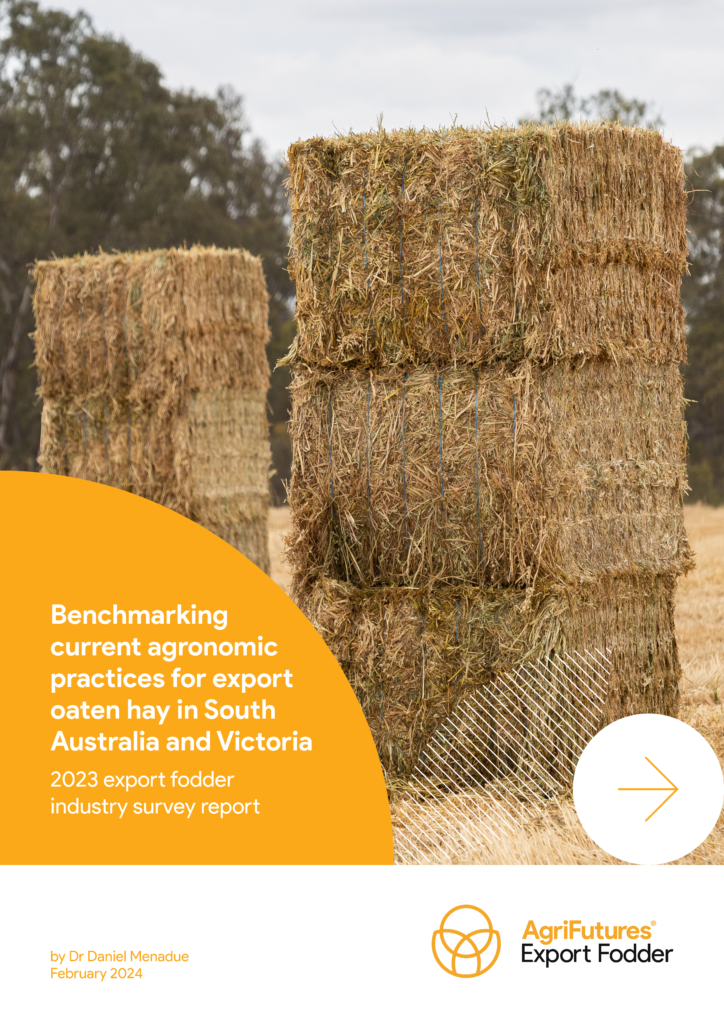A survey of producers, exporters and advisers within the South Australian and Victorian export oaten hay industry was conducted to benchmark current agronomic practices and guide future research, development and extension (RD&E). This survey was conducted within the AgriFutures Australia-funded project Delivering a step change in agronomic management of export oaten hay in South Australia and Victoria.
The results of this survey provide a useful benchmark of current agronomic practices and highlights industry priorities for future RD&E to enhance export oaten hay production in South Australia and Victoria. The results indicate that recommended cutting times for export oaten hay are largely consistent with current agronomic practices, although the large variability amongst agronomists suggests the potential for greater industry-wide communication to further enhance hay quality. Oaten hay producers considered ‘crop growth stage’ and ‘forecasted rain events’ to be the most important factors influencing hay cutting time, suggesting reducing curing time to be an important area for future RD&E. While hay quality was considered the most important RD&E priority by industry participants, there was large variation in which quality traits were of importance across industry. This variation indicates the need to increase understanding of export oaten hay quality traits, as well as best agronomic management practices to achieve those hay quality traits.
Survey results indicate a strong alignment between industry practices and priorities within the current AgriFutures Australia-funded project. This project is investigating novel agronomic practices to increase oaten hay yield and quality in two oaten hay varieties, Kingbale and Mulgara; the two most common varieties currently used by South Australian survey participants. In Victoria, Kingbale was also identified as the most common variety, along with Yallara. The current focus within the RD&E project on new methods to reduce curing time was also validated through survey responses, with curing time considered the second largest current limitation for increasing oaten hay yield and quality. While survey responses indicate agronomic factors to be considered the greatest current barriers for increasing oaten hay production and quality, survey results suggest there may be an opportunity to improve current agronomic practices through improved communication of both current and previous research outcomes across the industry. Potential focus areas for future RD&E programs identified included the need for new oaten hay varieties, options for improving crop disease management, and reducing the impacts of seasonal variability and environmental stress. This report suggests a future focus on these suggested RD&E areas would also help to further address industry priorities to increase the sustainability and profitability of the South Australian and Victorian export oaten hay industry.





